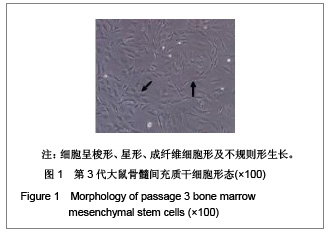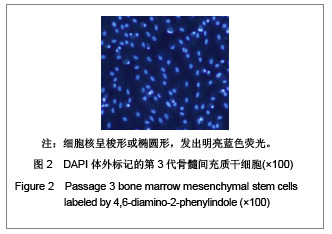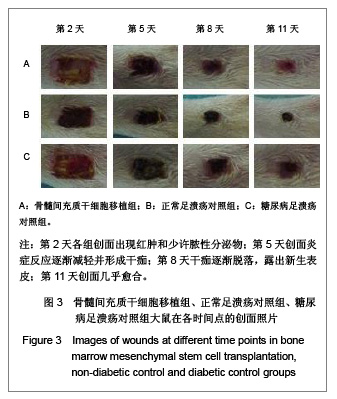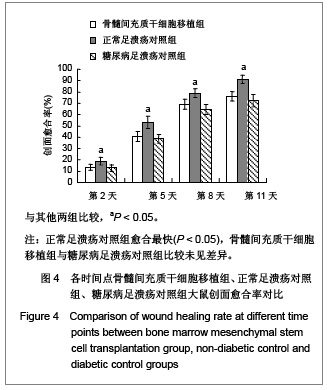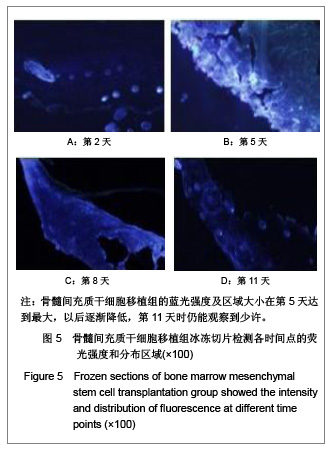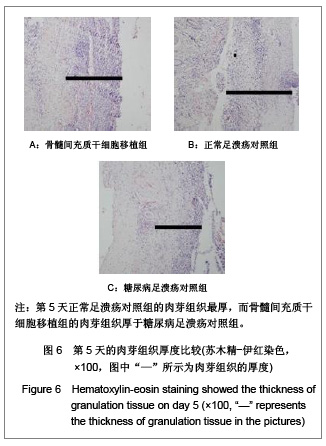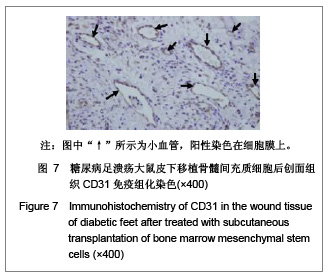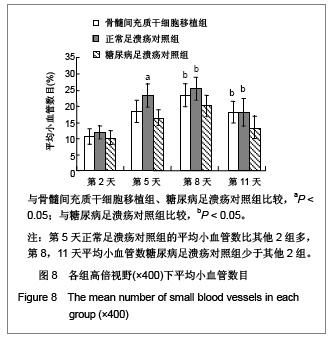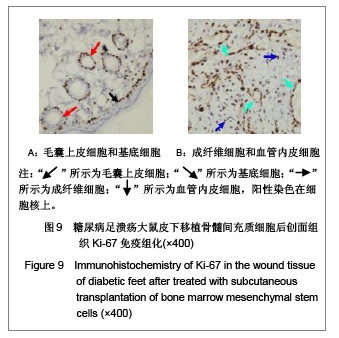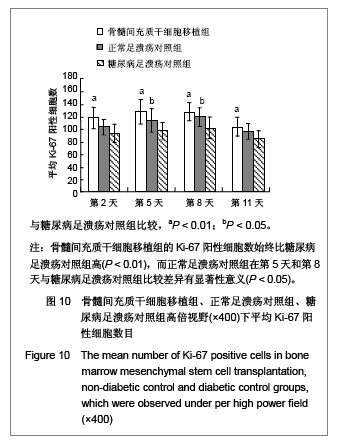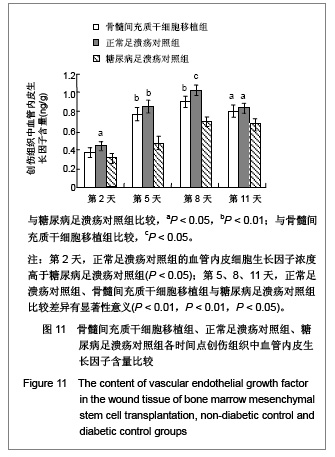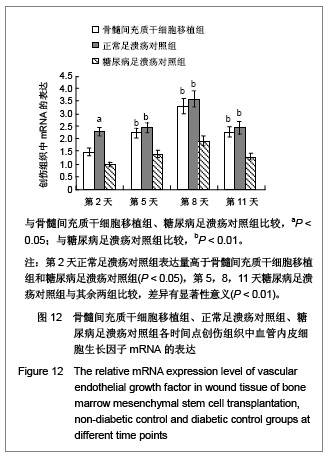中国组织工程研究 ›› 2013, Vol. 17 ›› Issue (10): 1766-1772.doi: 10.3969/j.issn.2095-4344.2013.10.010
• 干细胞移植 stem cell transplantation • 上一篇 下一篇
皮下移植骨髓间充质干细胞修复大鼠糖尿病足溃疡
万江波1,蔡 黔2,刘 毅2
- 1 兰州大学第二医院,甘肃省兰州市 730000
2 解放军兰州军区兰州总医院全军烧伤整形外科中心,甘肃省兰州市 730050
Subcutaneous transplantation of bone marrow mesenchymal stem cells for repairing diabetic foot ulcers in rats
Wan Jiang-bo1, Cai Qian2, Liu Yi2
- 1 The Second Hospital of Lanzhou University, Lanzhou 730000, Gansu Province, China
2 Center of Burns and Plastic Surgery, Lanzhou General Hospital, Lanzhou Command, Lanzhou 730050, Gansu Province, China
摘要:
背景:糖尿病足溃疡严重威胁患者的健康甚至生命,目前缺乏良好的治疗手段,而干细胞疗法在组织再生和创面修复方面展现出独特的优势及潜力。 目的:评价骨髓间充质干细胞经创缘皮下移植对大鼠糖尿病足溃疡的治疗效果。 方法:全骨髓贴壁法体外培养Wistar大鼠骨髓间充质干细胞至第3代,经DAPI标记。36只雄性Wistar大鼠随机分成骨髓间充质干细胞移植组、正常足溃疡对照组、糖尿病足溃疡对照组,大鼠糖尿病经腹腔注射链脲佐菌素诱导,所有大鼠在双后足背上切取一3 mm×7 mm矩形全层皮肤制成足溃疡模型。于骨髓间充质干细胞移植后第2,5,8,11天评估各组大鼠创面愈合情况及相关蛋白和基因水平的表达情况。 结果与结论:正常足溃疡对照组的创面愈合率大于骨髓间充质干细胞移植组和糖尿病足溃疡对照组,但后2组之间无差异。冰冻切片发现骨髓间充质干细胞移植组荧光强度和区域在第5天达到高峰。苏木精-伊红染色显示第5天正常足溃疡对照组肉芽组织最厚,骨髓间充质干细胞移植组比糖尿病足溃疡对照组厚。免疫组化发现骨髓间充质干细胞移植组CD31平均小血管数目在第8天和第11天比糖尿病足溃疡对照组多(P < 0.05);骨髓间充质干细胞移植组平均Ki-67阳性细胞数在各时间点均比糖尿病足溃疡对照组多(P < 0.01)。ELISA和RT-PCR结果均显示,正常足溃疡对照组血管内皮细胞生长因子表达水平较骨髓间充质干细胞移植组、糖尿病足溃疡对照组高。第5天和第8天骨髓间充质干细胞移植组表达水平显著高于糖尿病足溃疡对照组(P < 0.01)。说明骨髓间充质干细胞经创缘皮下移植明显促进大鼠糖尿病足溃疡的愈合,此疗效可能是通过促进创伤中血管内皮细胞生长因子的表达实现的。
中图分类号:
